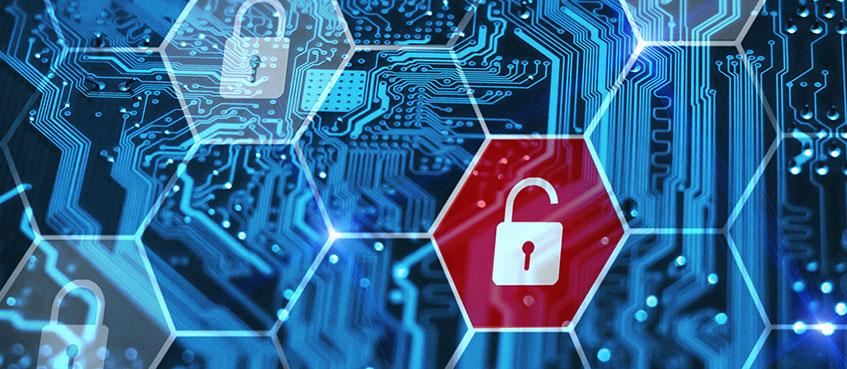
17 Jun Cyber-Security – Top Threats for 2022
We all live in a highly connected world. This connectivity not only applies to our personal lives but is also increasingly prevalent in our professional work. Connected devices, machines, and processes now perform many critical functions within every industry sector and vertical.
One side-effect of all this connectivity is the increased vulnerability to cyber-attack. Cyber-criminals have proven quite adept at developing tools and techniques that can exploit the explosion of IoT and IIoT (industrial internet of things)-enabled assets over the past decade.
Cyber-security is not a static thing—what worked yesterday may not work today. Protection of our devices, machines, and data requires a comprehensive understanding of the cyber-threat landscape and how it is evolving.
Today’s Top Threats
Any list of cyber-threats and vulnerabilities could be quite extensive. In this article we will focus on those that pose the most significant hazard to companies and individuals.
- Cloud exposure: Many AI and IoT-enabled devices and smart ecosystems are heavily reliant on cloud infrastructures for data processing and storage. This can create fertile ground for cyber-criminals. Vulnerabilities include:
- Exposure of sensitive data during cloud-dependent processing and analysis
- Compromised data storage can be open to data theft and/or tampering
- High data-latency creates additional exposure that does not exist within non-cloud-based infrastructures
- Insecure IoT devices: We would like to believe that all of our personal and professional IoT devices are secure. They are not. Studies have indicated that the average IoT ecosystem can be probed for weakness several thousand times per week. Risk factors include:
- Inadequate security practices by individual devices owners and device/machine OEMs and operators
- Lack of inbuilt security protocols can leave IoT devices vulnerable to cyber-breach during the entire lifespan of the device
- Ransomware: Ransomware is a form of malware that infects an IoT device or machine. The infection can impact individual control files or expand to infect and entire ecosystem of devices and machines. As the name implies, the malicious actor then demands a “ransom” for the return of access to systems and files. Negative impacts include:
- It is estimated that the average device, machine, or system downtime due to a ransomware attack is ~ 3 weeks.
- Depending on what has been hacked, the ransom payment demand can range from a few thousand to several hundred thousand dollars.
- Depending on the scope of the attack, a single asset, an entire factory, or a chain of interconnected factories can be disabled.
- Interconnected systems: Companies that deploy smart device and machine infrastructures typically have an extremely broad base of suppliers, partners, customers, etc. Cyber-criminals can exploit these interconnected systems to create attacks that are both broad and deep. Specific risks include:
- Insufficient and inconsistent hardening of security protocols across multiple systems controlled by multiple entities
- Increased reliance on contractors and remote employees that may be less well trained on proper security methods and procedures
- Design oversight: In the rush to get new IoT products to market, device manufacturers may deprioritize the design and deployment of effective security components. This problem can be further aggravated by the fact that many of these devices have limited storage and computing power.
- Lack of Endpoint AI-enabled security protocols: As referenced above, many large IoT and IIoT systems utilize legacy cloud infrastructures for data processing and storage. This legacy approach often falls short in protecting smart assets and their data from cyber-attack. When compared to cloud-based solutions, Endpoint AI-based security provides several advantages, including:
- IoT asset centricity: AI-enabled security algorithms are deployed directly into the microcontroller (MCU) of the device or machine. This effectively eliminates problems associated with latency, lack of customization, and real-time feedback associated with traditional cloud and network dependent solutions.
- Quicker implementation: Endpoint security allows developers to quickly onboard and validate security protocols into individual assets within the IoT ecosystem. An entire IoT security system can be designed and deployed much faster than was previously possible.
- Increased flexibility: Unlike legacy solutions, endpoint security provides the enterprise with increased flexibility in the construction of its IoT security program. AI-enabled security can be applied to all IoT assets or limited to those assets that are mission-critical.
- Customizable: Ability to customize security protocols on an asset-by-asset level to accommodate specific conditions for the device or machine.
- Faster alerts and mitigation: Localized, asset-specific, security that provides quicker notification of security breach and faster activation of mitigation actions.
- Local control. Local control equates to local power. Processing critical data at the endpoint eliminates security risks associated with cloud processing – more secure and more cost effective.
The cyber landscape will continue to evolve. As our personal IoT devices become increasingly sophisticated and our workplace machines become increasingly interconnected cyber-criminals will continue to search for weakness.
Knowledge is power. Complacency can have devastating consequences!


